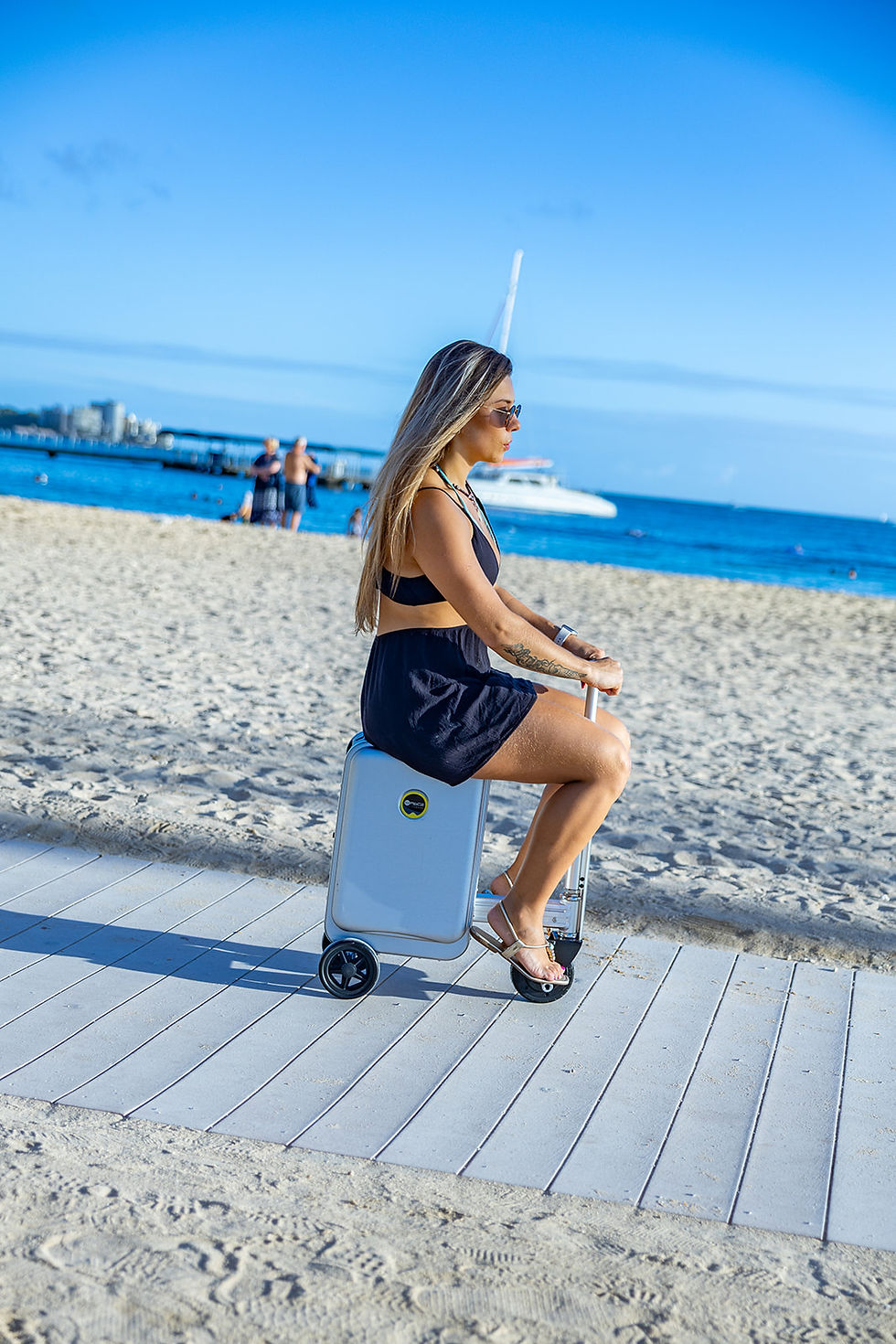FAA Lithium Battery Safety: Flying Smart with Space Suitcases®
- Space Suitcases® Editorial Team

- 3 days ago
- 2 min read
The Federal Aviation Administration (FAA) sets global standards for how lithium batteries travel on airplanes.
Every Space Suitcase® is engineered around these safety standards — because your luggage should be as airworthy as you are.
Here’s how our technology keeps you safe, compliant, and worry-free, no matter where you fly.
🔋 What the FAA Requires
The FAA governs the transport of lithium-ion batteries on all U.S. commercial flights — both domestic and international.
Their main guidelines are simple:
Batteries under 100 Wh are allowed in carry-on baggage.
Spare batteries must never be placed in checked luggage.
Each battery must be protected from short circuit or damage (no loose terminals or metal contact).
Devices must have a way to be fully powered off during flight.
💡 In plain terms: If your suitcase battery can be removed and safely carried on board — it’s FAA compliant.

🧠 How Space Suitcases® Meet FAA Standards
We designed every battery from the ground up to exceed FAA expectations.
Each battery includes:
Automatic short-circuit protection
Thermal cutoff sensors to prevent overheating
Surge and discharge balancing for long-term health
Clear watt-hour labeling for inspection
✈️ Carry-On vs. Checked Luggage
When traveling by air, remember:
Always remove your battery before checking in your suitcase.
Carry the battery in your hand luggage, same as any power bank.
Check with your airline or travel agent if you’re unsure — some allow batteries to remain installed for cabin carry-on, while others prefer removal.
💡 Pro Tip: TSA and FAA work together — so if it’s TSA-approved, it’s already FAA-compliant.
🧪 Tested and Verified
Before a Space Suitcase® ever reaches your hands, its battery undergoes multiple rounds of testing:
Thermal stress tests (simulating cabin heat cycles)
Shock and vibration tests (simulating turbulence)
Discharge stability checks
EMI shielding validation for sensitive aircraft environments
These certifications align with both UN 38.3 and FAA lithium battery transport standards — the same used for laptops and medical devices.

🌎 Global Travel Compatibility
While the FAA regulates U.S. air travel, international bodies like EASA (Europe) and ICAO (global) mirror the same limits — meaning your Space Suitcase® is safe worldwide.
Our smart battery system was designed for universal compliance:
Removable in seconds for inspection
Clearly labeled watt-hour output
Protective isolation cell design
🔒 Designed for Peace of Mind
Safety doesn’t mean compromise — it means confidence.
With Space Suitcases®, you don’t need to guess whether your luggage is allowed onboard.
You’re already flying within FAA guidelines, thanks to:
Intelligent battery management systems
Protective enclosures
Effortless removal and reinstallation
💬 Final Thoughts
Smart travel should never come with uncertainty.
At Space Suitcases®, we’ve built compliance right into the core of our design — so you can focus on where you’re going, not what you’re carrying.
Every rideable suitcase we make is powered by innovation, tested for safety, and approved for flight.
The sky isn’t the limit — it’s your runway.







Comments